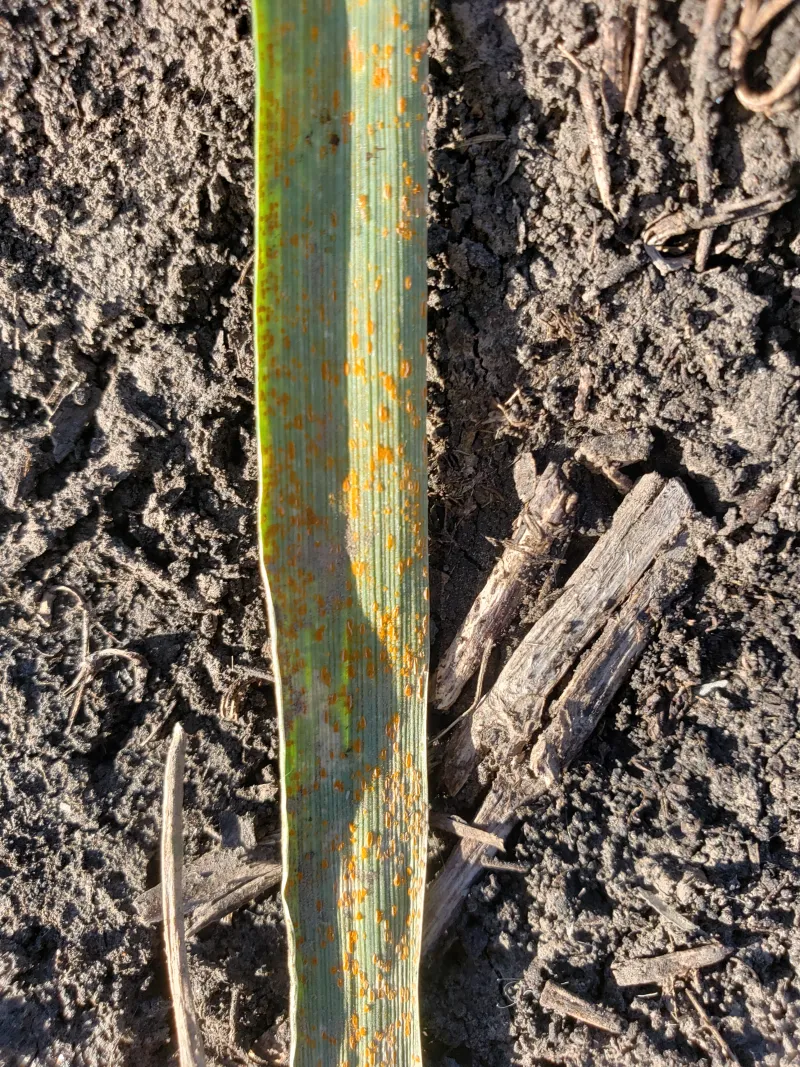Rye is an important component of weed control in many organic systems. The benefits of rye are continuing to be explored as a part of integrated weed management in conventional systems. Rye often can reduce the density and biomass of many common weeds in agronomic systems, but it cannot replace traditional herbicide programs for complete weed control. Research demonstrating the weed control value of rye in no-till soybean systems has been published in locations across the Corn Belt, mid-South and eastern U.S., all locations where spring moisture is rarely a limiting factor for crop establishment.
Rye planted at rates of 45 pounds per acre or higher can reduce the density of fall and spring germinating horseweed populations in the eastern Corn Belt. Several studies have evaluated the benefit of rye for waterhemp and Palmer amaranth management. Similar to horseweed, rye can reduce density and biomass of these two important pigweed species consistently, but it does not completely control either weed.
Rye biomass of more than 1,300 pounds per acre has been effective at delaying the time these pigweeds take to grow to 4 inches in height by 16 days. In areas with widespread, multiple herbicide-resistant weed biotypes, rye can be an important integrated tool to suppress these weeds and allow for timelier postemergence applications of effective herbicides.
Rye provides weed suppression through a combination of competition and allelopathy. When rye is growing vigorously, it provides fair to good control of some herbicide-resistant weeds, including foxtail, kochia and horseweed. As an example, in an NDSU soybean trial using rye as a cover crop at Carrington, preplant (late May) foxtail and kochia control ranged from about 70% to 80% with adequate rye plant growth and density.
Rye provides some suppression to other problematic weeds such as waterhemp, green and yellow foxtail, and common ragweed. Some species are relatively unaffected by rye suppression, including members of the legume and mint (such as lanceleaf sage) families.
Once rye reaches anthesis, it ceases to provide weed suppression other than shading effects. Generally, suppressed weeds are able to germinate in the presence of rye; however, growth and development are inhibited severely until the rye reaches anthesis. Field observations among rye varieties suggest that ND Dylan and Hancock offer better suppression of kochia than other varieties.
A rye cover crop may reduce the need for a pre-emergence herbicide but should be considered a supplement to existing weed management tools. Field scouting is needed to guide the timely application of postemergence herbicides for full-season control. In an NDSU trial at Carrington, foxtail and common lambsquarters control (97% to 99%) with rye terminated after pinto bean planting was similar to control with a pre-emergence herbicide when evaluated three weeks after bean planting. Also, foxtail and common lambsquarters control was 81% and 66%, respectively, when rye was terminated five weeks before bean planting, compared with the excellent weed control with delaying rye termination until after bean planting.
Uniform plant spacing and good growing conditions are needed for weed suppression with rye. Rye quickly loses most weed suppressive characteristics following termination. Another weed management strategy is likely needed following rye anthesis or termination, although occasionally the remaining rye mulch can provide an extended reduction in weed seed germination.








